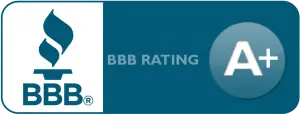How to Spot Sewer Line Infiltration Before Backups
In the coastal regions of the Pacific Northwest, heavy rainfall can exacerbate sewer line issues, making it essential to stay vigilant. You might not think about your sewer line until there’s a problem, but paying attention to certain signs can save you from a messy situation. In areas like Seattle, where rainwater can infiltrate aging sewer systems, unusual odors, slow drains, and gurgling noises are just a few clues that something’s up. Keeping an eye on these indicators can make all the difference in preventing costly repairs and damage. So, how can you spot these issues before they escalate into a full-blown backup in such rain-prone areas?
Recognizing Unusual Odors
One of the first signs of sewer line infiltration you might notice is an unusual odor wafting through your home. This smell is often a strong, unpleasant aroma reminiscent of rotten eggs or raw sewage. It can linger in areas like basements, bathrooms, or even your kitchen. You shouldn’t ignore this smell, as it often signals a crack or blockage in your sewer line.
In coastal cities like Seattle, heavy rainfall can exacerbate sewer line issues, leading to increased pressure on older pipes. Similarly, in areas like New Orleans where the ground is soft and prone to shifting, sewer lines can crack more easily. In both cases, unusual odors may become more common, especially after a heavy storm.
Take a moment to sniff around and identify where the odor is strongest. If it’s more pronounced near drains or lower levels of your home, it’s a clear indicator of sewer issues. Acting swiftly can prevent further damage and costly repairs.
In regions with clay-heavy soil, like parts of Texas, soil movement can lead to sewer line problems more frequently, so residents should remain vigilant. Consider calling a professional plumber to assess and resolve the problem before it escalates into a major headache.
Identifying Slow Drains
A common sign of sewer line infiltration is when your drains unexpectedly slow down. In regions with dense urban areas and older infrastructure, such as New York City or Boston, aging sewer systems are more susceptible to issues. You might notice water taking longer to disappear in your sinks, showers, or tubs.
This slowdown can indicate a blockage caused by debris or tree roots infiltrating your sewer line. In cities with numerous trees like Portland or Seattle, root infiltration is a frequent problem. If just one drain is slow, it might be a localized clog. However, if multiple drains in your home are sluggish, the issue likely lies within the main sewer line.
In regions with heavy rainfall, such as the Pacific Northwest, excess water can exacerbate these problems. Pay close attention to how quickly water drains after use. Don’t dismiss these signs as minor inconveniences, as they could lead to significant issues if ignored.
Addressing the problem early helps prevent backups and costly repairs. Regularly clean your drains and consider professional inspections to maintain a healthy sewer system, especially in areas with older or more vulnerable infrastructure.
Monitoring Water Levels in Fixtures
Have you ever noticed unexpected changes in the water level of your toilet bowl? In many areas, such as those prone to heavy rainfall or regions with older plumbing infrastructure, these fluctuations can be more than just a simple anomaly.
Monitoring water levels in your home’s fixtures is crucial for identifying potential sewer line infiltration, especially in regions with aging sewer systems or where tree roots are common.
For instance, in cities with older neighborhoods, shifting soil can lead to sewer line misalignments, causing blockages. In coastal or flood-prone areas, excess water from heavy rains can lead to increased pressure on sewer systems, potentially causing backflows.
Toilets, sinks, and tubs should maintain a consistent water level, and in these regions, any noticeable fluctuation is a signal to investigate further.
Regularly check your toilet tank and bowl to ensure water levels remain stable. If you observe changes, it might indicate a problem downstream in the sewer line.
Addressing these changes promptly can help you avoid significant issues such as backups, which are more likely in areas with known infrastructure challenges.
Detecting Gurgling Noises
Have you ever heard strange gurgling noises coming from your drains in [Location Specific to Coastal Areas]? If so, it’s time to pay attention.
In coastal regions, gurgling sounds might indicate air trapped in the pipes, often caused by blockages or sewer line infiltration due to shifting sands and high groundwater levels. When water struggles to flow freely, it creates air pockets that manifest as gurgles. You might notice this noise after flushing toilets or when water drains from sinks and tubs.
To check for these tell-tale signs, listen closely when using different fixtures. If the gurgling persists, it could be a red flag for issues deeper in the plumbing system, often exacerbated by the salty environment which can accelerate pipe corrosion.
Ignoring these noises might lead to bigger problems down the line. Take action by contacting a professional plumber familiar with coastal plumbing challenges to inspect and address potential blockages before they escalate into major backups.
Observing Unexpected Lawn Growth
When you notice lush, uneven patches of grass on your lawn in the Pacific Northwest, it might be more than just a sign of good soil.
In regions with high rainfall like Seattle, those vibrant areas could indicate a sewer line infiltration beneath the surface. The frequent rain can exacerbate the problem by causing wastewater leaking from compromised pipes to act as an unintended fertilizer, leading to accelerated growth in localized spots.
You should take a closer look at these patches, especially if they seem to appear suddenly or without a change in your lawn care routine. It’s not just about aesthetics; ignoring this could lead to more significant plumbing issues.
Checking for Foundation Cracks
When inspecting homes in areas like San Francisco or Los Angeles, where seismic activity is a concern, it’s crucial to check for foundation cracks. These cracks can indicate sewer line infiltration, as water seepage from damaged pipes may weaken your home’s foundation, especially in earthquake-prone regions.
Begin by examining the exterior walls and basement for any visible cracks or shifts. Pay close attention to the width and direction of these cracks; horizontal or widening cracks might suggest serious issues, particularly in areas susceptible to seismic shifts.
Inside, look for signs of movement such as sloping floors or sticking doors, which could result from foundation settling, a common issue in cities like New Orleans, where the soil is marshy.
Use a flashlight to inspect dark corners and behind large furniture where cracks might be hidden. If you find anything suspicious, it’s wise to contact a local professional who understands the challenges specific to your area for further evaluation.
Addressing foundation issues early can prevent costly repairs down the road, especially in environments prone to natural challenges like earthquakes or flooding.
Noticing Rodent and Insect Activity
If you start noticing an increase in rodent or insect activity around your home in areas like the low-lying neighborhoods of New Orleans or the humid climate of Miami, it could be a sign of sewer line infiltration.
In such regions, the combination of humidity and frequent rainfall can exacerbate sewer line issues, making them more prone to attracting pests. Rats and insects like cockroaches are drawn to the moisture and food waste found in compromised sewer lines, which can be more prevalent due to the area’s environmental conditions.
They can easily exploit even the smallest cracks or breaks to access these resources. You might see more pests in your basement or around drains, indicating they’ve found a way in.
Listen for scratching noises in walls or ceilings, which could suggest rodents are nesting. Pay attention to increased sightings of pests, especially around entry points like doors or windows.
If this activity seems unusual, it’s wise to inspect your sewer line for potential issues before they become bigger problems, particularly in these susceptible locations.
Understanding Changes in Water Bill
A sudden spike in your water bill in regions like the Pacific Northwest can signal sewer line infiltration, especially after heavy rainfall that these areas frequently experience. When you notice an unexpected increase, it’s essential to investigate. Sewer line issues often result in leaks that waste water, leading to higher costs.
First, rule out common causes like dripping faucets or running toilets. If everything seems normal, the problem might lie underground, exacerbated by the wet climate which can contribute to sewer line degradation over time.
Look for signs around your property. In places with clay-heavy soil such as the Midwest, damp patches or unusually lush green spots in your yard can indicate leaks because the soil can retain moisture longer, making leaks more noticeable.
Listen for unusual sounds like water running when no fixtures are on. In older neighborhoods of the Northeast, where aging infrastructure is common, check your meter. If it’s spinning when water’s off, you might’ve a leak.
Catching this early can save you from a messy, costly backup. Don’t ignore it; act swiftly to prevent further damage, especially in coastal areas where local ordinances might require prompt repairs to prevent environmental harm.
Conclusion
In regions with older infrastructure, such as many areas in the Northeast, spotting sewer line infiltration before it leads to backups is crucial to avoid expensive repairs and property damage. Residents should be particularly vigilant for unusual odors, especially in basements, which are common in this area. Slow drains and fluctuating water levels are also key indicators. Pay attention to gurgling noises from pipes and be alert to any unexpected lushness in your lawn, which might indicate a leak underground. In areas prone to cold winters, like those in the Midwest, watch for foundation cracks that can be exacerbated by sewer line issues. Additionally, an increase in rodent and insect activity or an unexplained spike in your water bill should not be ignored. Act promptly at the first sign of trouble to safeguard your home and budget.
Tags






